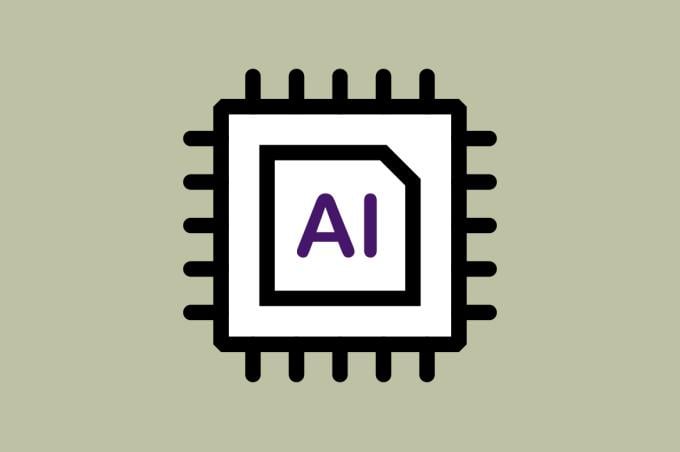If you aren’t already using augmented intelligence (AI) in your medical practice, chances are you will be soon.
In just one year, physicians’ use of AI—which is commonly referred to as artificial intelligence—has nearly doubled for certain tasks, AMA research shows. About three in five physicians surveyed by the AMA in 2024 reported that they used health care AI in their practice for tasks such as documentation of billing codes, medical charts or visit notes; creation of discharge instructions, care plans and/or progress notes; translation services, assistive diagnosis and more.
The AMA’s survey (PDF) of physician sentiment toward health care AI also found that enthusiasm for the technology rose by five percentage points in just one year, with 35% reporting that their enthusiasm for health AI exceeded their concerns. That was up from 30% who felt that way a year earlier.
From AI implementation to EHR adoption and usability, the AMA is fighting to make technology work for physicians, ensuring that it is an asset to doctors—not a burden. As part of that effort, the AMA has gathered CME to help physicians better understand the health AI technology that is becoming part of the world.
The AMA offers physicians the chance to explore seven AI modules that are part of the AMA Ed Hub™ CME series, “AI in Health Care,” to introduce learners to foundational principles in AI and machine learning, a subdomain of AI that enables computers to learn patterns and relationships from data without being explicitly programmed by people.
Developed by the AMA ChangeMedEd initiative and the University of Michigan DATA-MD team and geared toward medical students, it is also suitable for residents, fellows, practicing physicians and other health professionals.
How health care AI models are developed
- Learn the basics about AI and how AI is developed for the health care setting. The “Introduction to Artificial Intelligence in Health Care” module describes what big data is and what its impact is on AI and machine learning in the health care setting. Physicians can also learn how to differentiate between traditional computer programming, AI and machine learning as well as how to recognize potential strengths and limitations of AI and machine learning.
How AI models learn
- Explore the three fundamental machine learning methods—supervised, unsupervised and reinforcement learning—and learn how to apply a supervised learning model to a dataset to help solve a clinical problem, such as predicting the presence or absence of cardiovascular disease. In the “AI in Health Care: Methodologies” module, physicians also can learn about deep learning, including convolutional neural networks and recurrent neural networks, and how to identify natural language processing used in health care.
How to scrutinize AI tools used to make diagnoses
- Learn how AI-based diagnostic tools can complement a physicians’ diagnostic decision making. This module, “The Use of AI in Diagnosis,” describes the components of the diagnostic process and how AI and machine learning is currently used in the process. With each AI system having its limitations, the module teaches physicians how to interpret performance measures of diagnostic accuracy commonly reported in AI and machine learning literature and applies the results of a diagnostic study using AI and machine learning to a clinical case.
How to choose the right AI model for prognostication, treatment
- Through this module, “AI for Prognostication and Treatment,” discover how to recognize potential AI and machine learning uses when making prognostication and treatment decisions. Physicians can learn about the benefits and limitations of these technologies for prognostication and treatment, how to interpret the results of a prognosis study that includes AI and machine learning and how to apply the results of a prognosis study that includes AI and machine learning to a clinical case.
How to practically apply AI in the health care setting
- Understand what it takes to take AI from the theoretical to reality in your clinic. “Practical Applications of AI in the Health System” lays out the potential impact of AI on clinical practice, research and education. It also identifies AI stakeholders and their roles, outlines key considerations when implementing AI and machine learning algorithms into clinical practice and describes the potential impact AI and machine learning can have on various aspects of the health system.
How to ensure AI is used ethically, safely in care
- Discover how physicians can contribute to ensuring that AI is used ethically and safely in the clinical setting. This module, “Navigating Ethical and Legal Considerations of AI in Health Care,” helps physicians recognize the possible ethical and legal challenges associated with using AI and machine learning in health care. It also delves into laws and liability related to health care AI and machine learning and describes the current governance and regulation landscape.
These seven CME modules are enduring material and designated by the AMA for a maximum of 3.5 AMA PRA Category 1 Credit™.
They are part of the AMA Ed Hub, an online platform with high-quality CME and education that supports the professional development needs of physicians and other health professionals. With topics relevant to you, it also offers an easy, streamlined way to find, take, track and report educational activities. Learn more about AMA CME accreditation.
Find even more health care AI learning modules compiled together at the Ed Hub AI collection, including studies of how chatbots, large language models, natural language processing and machine learning are transforming medicine and health care.
And check out JAMA+ AI, a channel dedicated to premier scientific content, educational reviews and commentary on AI and medicine, The channel from JAMA Network™ compiles content published across JAMA®, JAMA Network Open and the JAMA specialty journals, and builds on that published content with new multimedia materials, including author interviews, videos, medical news and a regular podcast.




